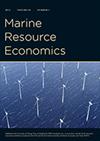娱乐需求模型中经济评估的旅行等价性:对补偿恢复和利益转移的启示
IF 1.7
3区 经济学
Q2 ECONOMICS
引用次数: 2
摘要
本文论证了一个人去娱乐场所的次数可以被视为一个效用价值指标,这具有有益的意义。我们证明,作为一种效用指数,出行次数体现了站点质量、到达站点的成本和替代站点的信息。研究结果对补偿性修复项目评价和效益转移具有实用价值。这一发现来自于参数线性随机效用最大化(RUM)模型,这是娱乐需求建模的“主力”,因此继承了该模型的局限性。基于海洋休闲钓鱼实例的实证分析表明,只要到该地点的旅行次数占所有地点总旅行次数的一小部分,该近似是可靠的。此外,我们表明,当使用替代旅行成本假设时,使用近似值的潜在误差幅度与估计福利变化的误差幅度相当。我们还显示(它遵循效用指数逻辑),旅行成本系数的倒数是一个“便携”的每次旅行值,可以用于利益转移。最后,我们讨论了理论和实践的局限性。我们把我们的结果称为“行程等效性”。本文章由计算机程序翻译,如有差异,请以英文原文为准。
Trip Equivalency for Economic Valuation in Recreation Demand Models: Implications for Compensatory Restoration and Benefits Transfer
This paper demonstrates that the number of trips a person takes to a recreation site can be treated as a utility index of value, which has useful implications. We demonstrate that trip counts, taken as a utility index, embody information about site quality, the cost of reaching the site, and substitute sites. The result has practical value for assessing compensatory restoration projects and conducting benefits transfer. The finding is derived from a linear-in-parameters random utility maximization (RUM) model, the “workhorse” of recreation demand modeling, and so inherits the limitations of this model. An empirical analysis based on a marine recreational fishing example shows that the approximation is reliable as long as the number of trips to the site is a small fraction of the total trips to all sites. In addition, we show that the potential magnitude of the error from using the approximation is comparable to the magnitude of the error for estimates of changes in welfare when using alternative travel cost assumptions. We also show (and it follows from the utility index logic) that the inverse of the travel cost coefficient is a “portable” per-trip value that may be used in benefit transfer. Finally, we discuss theoretical and practical limitations. We refer to our result as “trip equivalency.”
求助全文
通过发布文献求助,成功后即可免费获取论文全文。
去求助
来源期刊

Marine Resource Economics
农林科学-渔业
CiteScore
4.30
自引率
10.30%
发文量
25
审稿时长
>12 weeks
期刊介绍:
Marine Resource Economics (MRE) publishes creative and scholarly economic analyses of a range of issues related to natural resource use in the global marine environment. The scope of the journal includes conceptual and empirical investigations aimed at addressing real-world oceans and coastal policy problems. Examples include studies of fisheries, aquaculture, seafood marketing and trade, marine biodiversity, marine and coastal recreation, marine pollution, offshore oil and gas, seabed mining, renewable ocean energy sources, marine transportation, coastal land use and climate adaptation, and management of estuaries and watersheds.
 求助内容:
求助内容: 应助结果提醒方式:
应助结果提醒方式:


